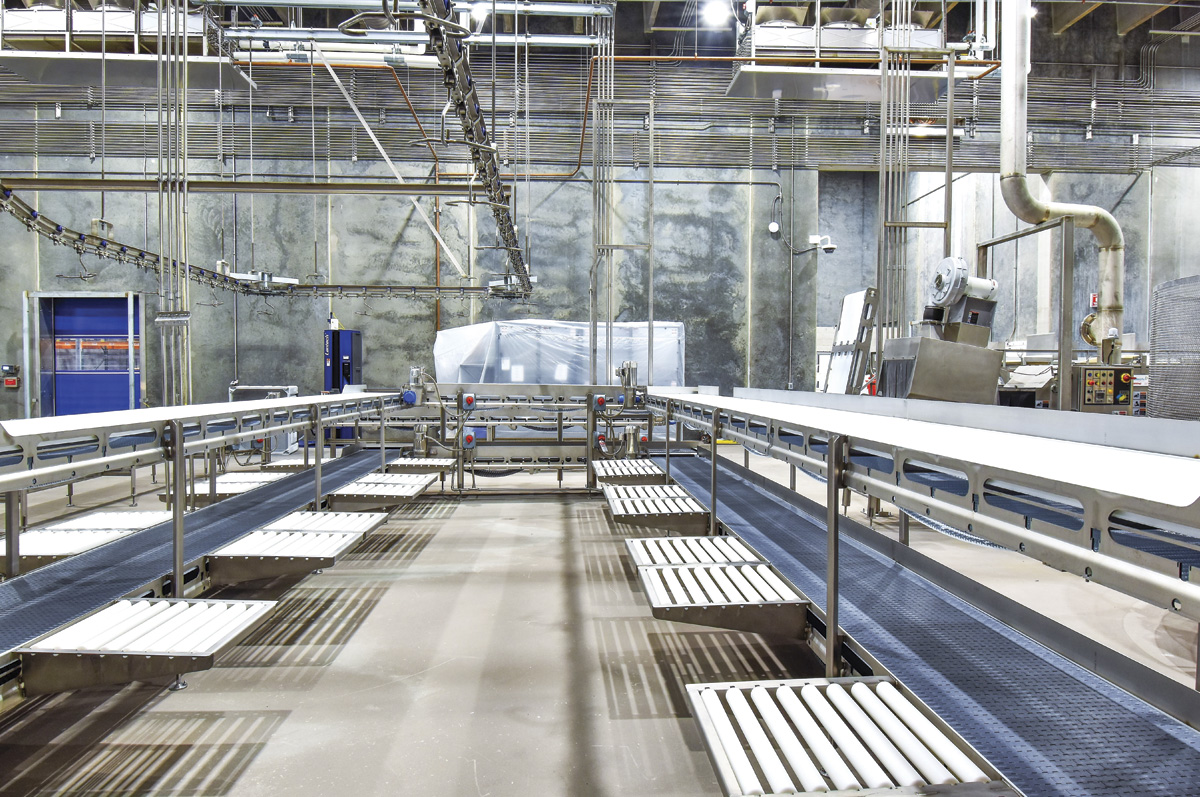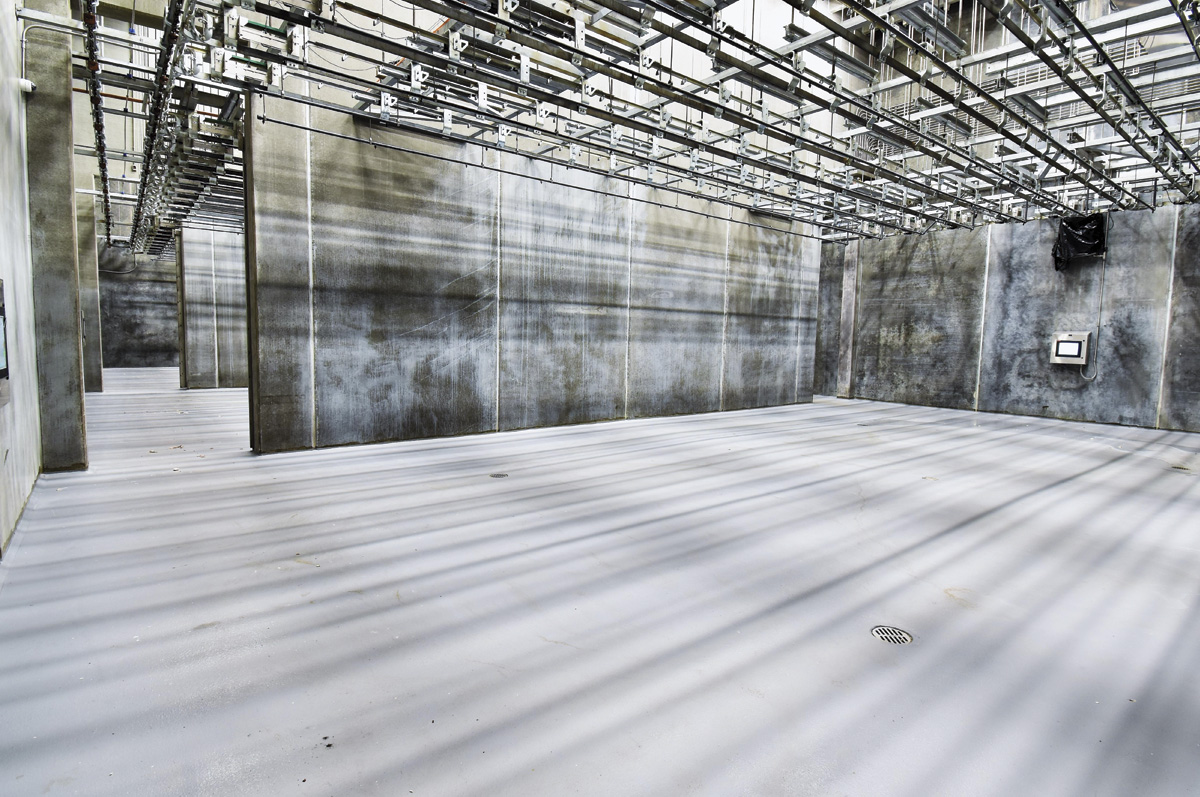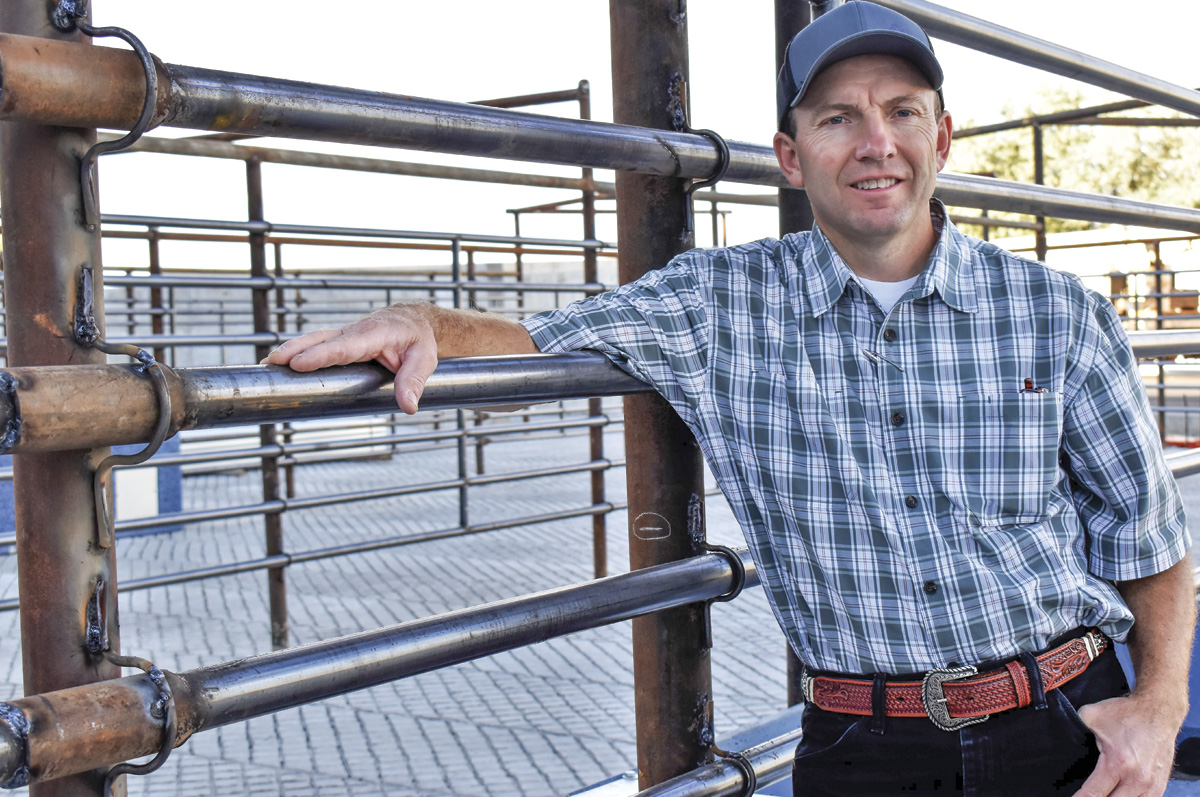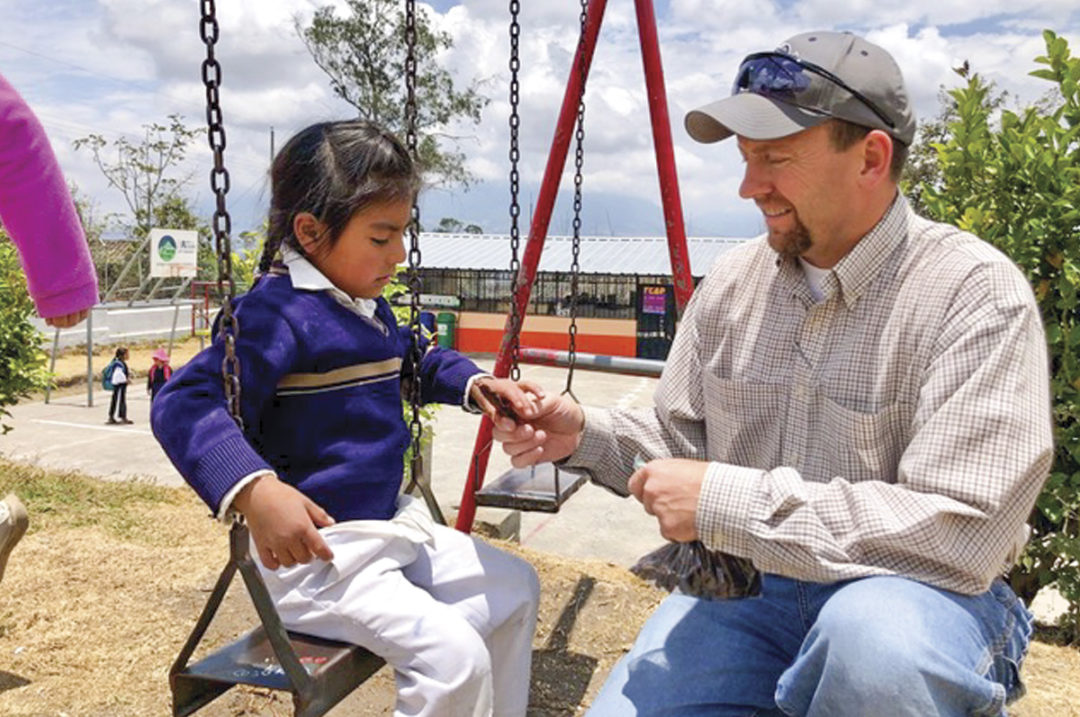One of the people involved with the new meat processing plant near Idaho Falls, Idaho, is Bob Stirling. He grew up on a small farm in northern Utah, near Salt Lake City, and being in FFA during high school sparked his interest in agriculture. “I received a scholarship to Utah State University and served a mission for the LDS church in a Spanish-speaking area of California,” he says.
He then went to Brigham Young University in Provo and met with professors who talked about projects they were doing in Latin America to help people improve their quality of life through better agricultural techniques. “I wanted to be a part of that, so I got a master’s degree in animal science with an international development emphasis. My research took me to Ecuador, Bolivia and Peru,” he says.
His first project was in Ecuador, working with dairy cattle, to see what could be done to increase milk production. “I finished school and thought I might go someplace like Mozambique in Africa or El Salvador in Central America working on these types of projects, but meanwhile I got married, started a family, and we bought a small farm in southeastern Idaho near Rigby,” he says.
“When I was at Utah State, I needed to do an internship. I knew a man in Idaho Falls who was involved in the meat and livestock industry – Roger Ball – who also has a ranch in Lemhi County raising bison. I did my internship in Blackfoot, Idaho, where he owned a meat-packing plant. After finishing school and my project in Ecuador, I reconnected with Mr. Ball. He’d moved his meat-packing operation to Omaha for two years, but was moving it back to Idaho Falls and needed employees,” Stirling says.
 The fabrication area is where the bodies of animals are boned and broken down into consumer cuts. Photo provided by Bob Stirling.
The fabrication area is where the bodies of animals are boned and broken down into consumer cuts. Photo provided by Bob Stirling.
Stirling started working there and was involved in the meat and livestock side of that operation for many years. The company processed cattle and bison for customers with large groups of animals. He went to Canada a few times to buy bison for some of the ranchers here who raised bison, to bring in new genetics.
“For much of that time, I was working in Mr. Ball’s beef jerky business, and then took my family to Ecuador for 18 months to teach villagers how to make jerky, so they’d have a source of protein [in non-perishable form] for their children,” Stirling says.
“When we came back, Mr. Ball’s grandsons contacted me. They said, ‘We’re tired of sending our cattle and bison to other places to slaughter; it’s become difficult to get appointments to slaughter them. There are not many plants that do custom slaughter anymore. We want to build our own slaughter plant and want you to help us with that.’ I said that was great because a job I’d lined up in Texas fell through, as they’d put a halt on all hiring because of COVID,” Stirling says.
The new facility proposal
Ball’s group wanted to build a regional midsized plant to slaughter cattle and bison. “At that time, there were only a few very large plants in the Midwest, killing 2,000 to 3,000 head per day, and they don’t buy cattle or custom process,” Stirling says. “On the other end of the spectrum were a few small mom-and-dad operations that kill up to 20 head a day, but nothing in between.”
When everyone was contracting COVID-19, the big packing plants shut down. “Cattle were being held too long and becoming overfat in feedlots. There was a huge need for a regional midsized plant to do custom slaughter,” Stirling says.
“We wanted to create a regional plant in Idaho Falls to slaughter beef cattle and bison, located on the I-15 corridor and close to Highway 20 and 26,” he says.
This company (Intermountain Packing LLC) doesn’t buy cattle or sell beef. Stirling says, “We are strictly a custom processor providing a service to people who are already in the livestock and meat business.”
The plant was under construction for two years, starting operation in November 2022. “It is designed to handle 500 head per day – the capacity of our coolers. Two weeks after starting, we were up to 125 head per day, doing both beef and bison. We’ll keep ramping up the operation until we reach maximum capacity this spring,” he says.
 The new meat processing plant in Idaho Falls handles quantities ranging from a semi-load to 500 animals per day. Photo provided by Bob Stirling.
The new meat processing plant in Idaho Falls handles quantities ranging from a semi-load to 500 animals per day. Photo provided by Bob Stirling.
“We are working on certifications, since much of this product will be exported overseas. We’ll be certified to send meat to Europe, Asia and other areas of the world. Many bison producers bring their animals here from Canada. We are only seven hours south of the border,” Stirling explains.
This plant will only harvest relatively large batches of cattle and bison, for producers who bring in a semi-load at a time. “We are not set up to do custom butchering of just a few animals, mainly because we have about 200 employees, and every time we have a different customer bring cattle, we must have a clean break between customers – for each new group. We don’t want 100 people just standing there, waiting for the next batch. Our minimum quantity is one semi-load – at least 50 to 100 head,” Stirling says.
These are customers who need animals slaughtered for a niche market. “We have several specialty customers, like bison ranchers who bring us two or three loads of bison at a time, and Wagyu customers who do the same thing, and others who raise grass-fed or organic beef. We are not doing commodity beef; we are filling a specialized niche for branded products. This is our customer base – people who bring us four or five loads per month or maybe 10 loads a month. They have their own program and it’s very consistent, but the big packers won’t talk to them, and these customers are too big for the mom-and-pop custom butchers to handle. We serve that in-between market,” he says.
There is a lot of interest in pasture-to-plate (farm-to-fork) enterprises. “Producers are tired of their only marketing option being the big four packers. They want something they can sell locally and capture the full value of their animals, using their own brand name, ranch name or breed,” he says.
It is great to have another option to give local producers another outlet for their animals. “Many people here in Idaho are shipping their cattle to Kansas, and that’s a 20-hour truck ride,” Stirling says. That doesn’t make sense, so it’s nice to have a closer facility.
 Bob Stirling poses in the new working facilities at Intermountain Packing, which opened in November 2022 to harvest beef and bison. Photo provided by Bob Stirling.
Bob Stirling poses in the new working facilities at Intermountain Packing, which opened in November 2022 to harvest beef and bison. Photo provided by Bob Stirling.
The workforce
This processing plant is a good place to work. “We’ve been able to recruit many good people because we are a one-shift plant. Some folks think we’ll eventually go to two shifts, but we’ll never do that because our coolers can only hold 500 head and they must be held at least 24 hours before we can bone them. So it will always be a one-shift plant, and we don’t work weekends. I tell people they’ll still be able to go to their kids’ ball games and have their own time on weekends,” he says.
“We get a lot of workers who come from potato warehouses, and they tell us this is so much better because they’d been working graveyard shift for six months and can’t stand that anymore, or were working Saturdays and Sundays the past year. We promote our good conditions because working in a packing plant is not the world’s best job. If we can make it a nice place to work, with good hours and good pay, more people will stay at this job,” Stirling says. They also offer great benefits.
Some people thought the operation would lose half its workforce in the first week. “But,” Stirling says, “we’ve had good retention; only a few people did not come back. Most of our employees are Hispanic and tell me this is a great job. They keep showing up, work hard and do a very good job for us. I think it’s a good opportunity for many people.” The additional jobs are also a help to the local economy, he adds.



.jpg?height=auto&t=1713304395&width=285)


